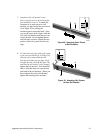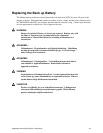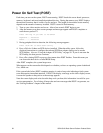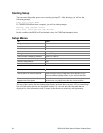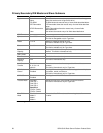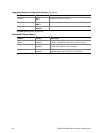Configuration Software and Utilities 53
Using BIOS Setup
This section describes the BIOS Setup options. Use Setup to change the server configuration. You
can run Setup with or without an operating system being present. Setup stores most of the
configuration values in battery backed CMOS; the rest of the values are stored in flash memory.
The values take effect when you boot the server. POST uses these values to configure the
hardware; if the values and the actual hardware do not agree, POST generates an error message.
You must then run Setup to specify the correct configuration.
Run Setup: You may run Setup to modify such server board feature as:
• Select diskette drive
• Select parallel port
• Select serial port
• Set time/date (to be stored in RTC)
• Configure IDE hard drive
• Specify boot device sequence
• Enable SCSI BIOS
• View processor speed
Run SSU, not Setup: You must run the SSU instead of Setup to do the following:
• Add or remove any ISA board that is not Plug and Play-compatible
• Enter or change information about a board
• Alter server resources (such as interrupts, memory addresses, I/O assignments) to user selected
choices instead of choices selected by the BIOS resource manager
Record Your Setup Settings
If the values ever need to be restored (after a CMOS clear, for example), you must run Setup again.
Referring to the worksheets could make your task easier.
If You Cannot Access Setup
If the diskette drive is mis-configured so that you cannot access it to run a utility from a diskette,
you may need to clear CMOS memory. You will need to open the server, change a jumper setting,
use Setup to check and set diskette drive options, and change the jumper back. For a step-by-step
procedure, see Chapter 5, under the heading, “CMOS Jumper.”





